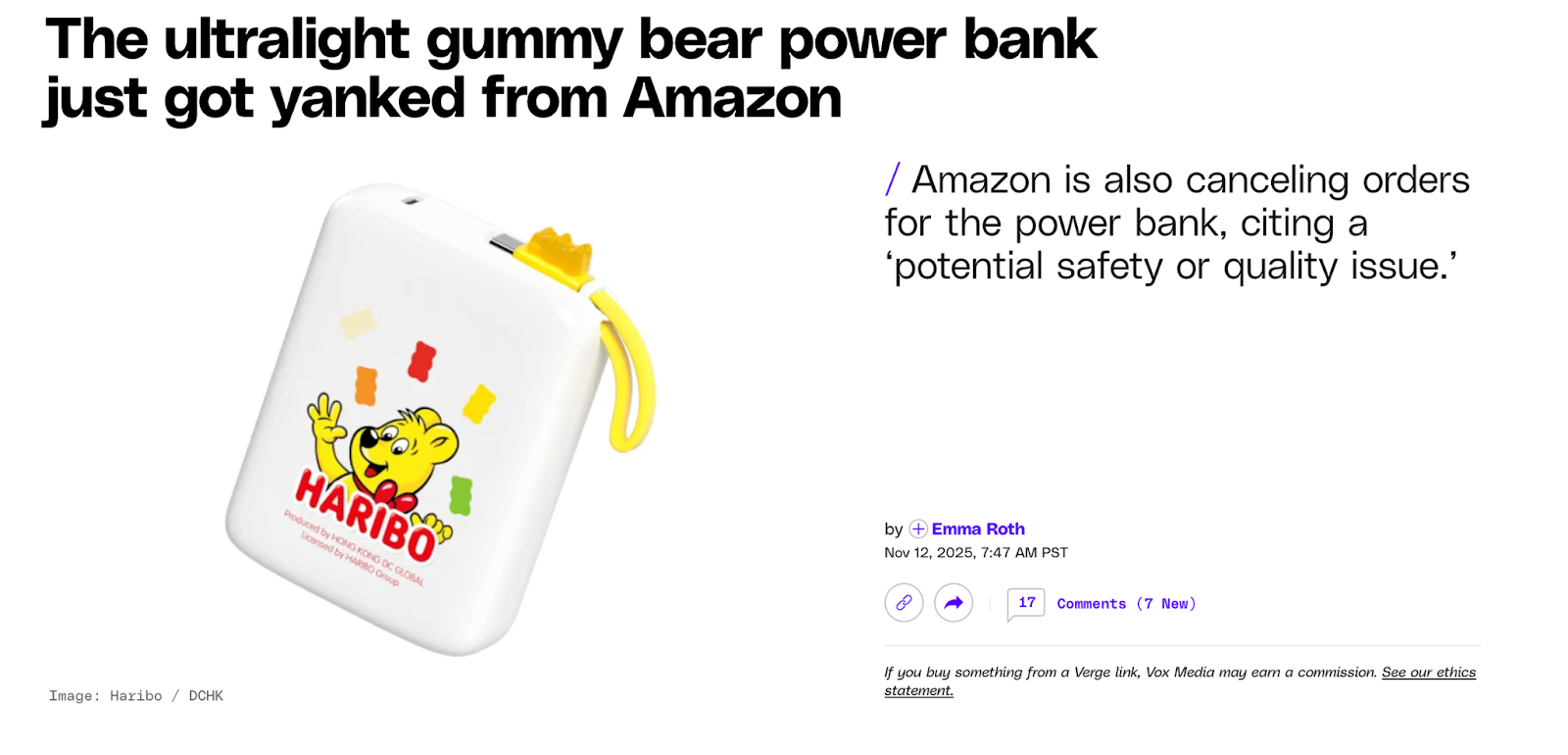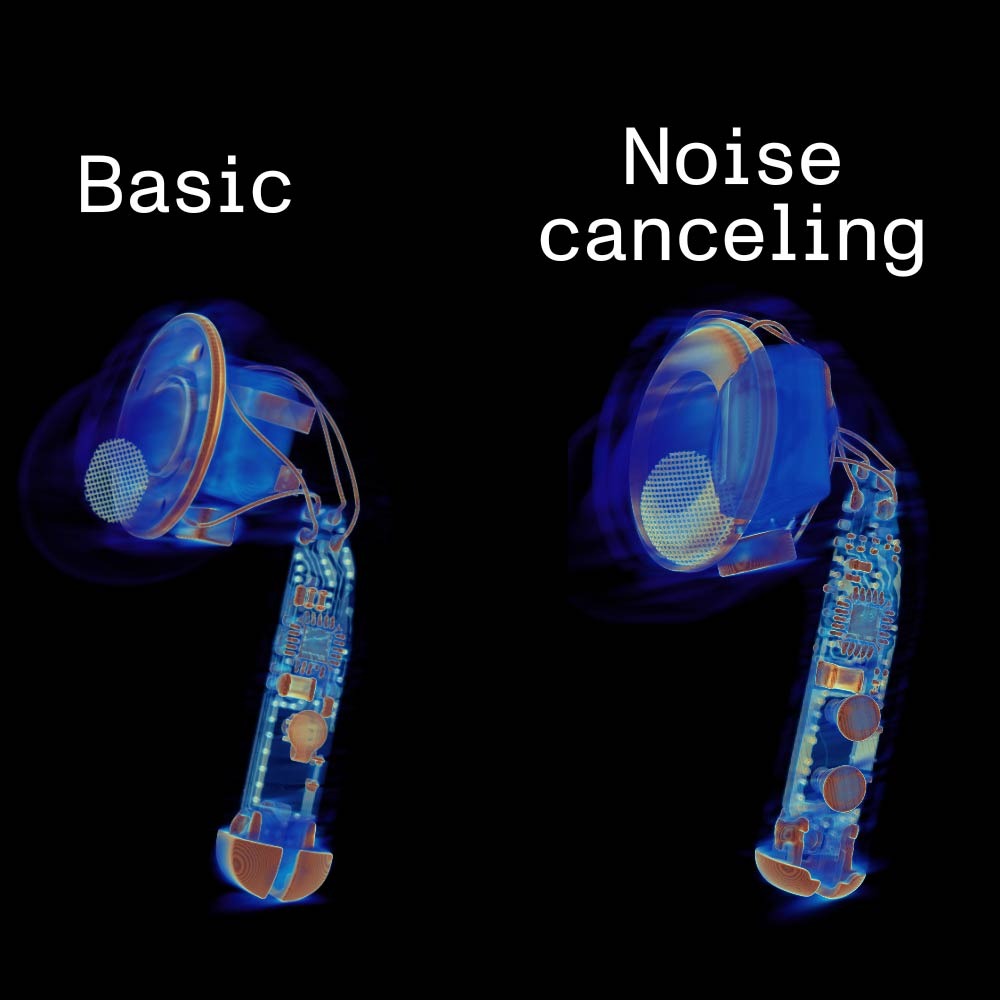Before it disappeared from Amazon, the Haribo 20,000 mAh power bank spread quickly through backpacking communities. It offered high capacity at a low weight, and its specs made it attractive to ultralight hikers who count every gram. And it was cute to boot; Haribo branding adorns the front and a gummy bear is attached to the charging cable. For a few months it looked like a great deal with broad appeal.
Then the listing was pulled, with Amazon telling customers there was a “potential safety or quality issue.” DC Hong Kong Global, the manufacturer of Haribo-branded electronics under license from the gummy bear company, didn't publish a statement about the issue.
We CT scanned the power bank along with a couple of the brand’s earbuds. Every product we scanned shows battery defects that increase the likelihood of failure and possibly fires.

Why backpackers loved it
A power bank sits at the intersection of energy storage, reliability, and field conditions. Backpackers rely on GPS, weather forecasts, and emergency communication. A battery failure can end a trip or create a dangerous situation. When a lightweight pack promises substantial capacity and has a great price, it's too much to resist.
The Haribo power bank weighs roughly 286g and has a capacity of 20,000 mAh. That ratio drew attention because it implied efficient cell packaging. Our scans show that the structure inside the pouch has bigger problems than sheer capacity.

What we found inside the power bank
The power bank contains two pouch cells with poor edge alignment. The electrodes don’t form a uniform block. Instead, the layers bend and rise in a wavy pattern. This pattern reflects uneven winding during assembly. It also indicates that the electrodes were not stabilized before sealing.
Poor edge alignment can lead to uneven lithium plating, which in turn can cause dendrite formation. This increases the risk of shortened battery life, failure, and, depending on where the dendrites form, the worst-case scenario of thermal runaway. The misaligned layers also indicate poor process controls generally, and one has to question the potential risks embedded in the other steps in the battery manufacturing process.

Deeper structural faults in headphones
The bluetooth headphones use smaller cells, but the defects inside them are more severe.
The noise-canceling earbud has torn cathode layers near the top of the stack. The tears leave exposed, irregular edges that can shift or shed material during cycling. When present, they signal significant problems in electrode cutting or handling, a clear indicator of a lack of quality control.

The same earbud shows inconsistent anode overhang. In some slices, the anode layer stretches far beyond the cathode. In others, it nearly disappears. An even overhang provides room for the anode to expand during charging. When it varies this widely, the cell cannot maintain balance under normal use.
The lower-cost, basic set of earbuds also suffer from poor anode overhang. We measured areas where the anode overhang was 0.072 mm, far below the industry standard of about 0.5 mm. Sufficient anode overhang is seen as a safety-critical feature to prevent irregular lithium plating and dendrite formation. The lack of overhang we observe in the earbuds meaningfully increases the likelihood that these batteries could fail prematurely or even catch fire.
The charging cases have the same issues. Their cells show poor alignment and insufficient overhang. These problems are systematic rather than isolated, indicating that all the cells across the Haribo-branded product line may come from the same low-quality supplier
.jpg)
Why these defects matter
Pouch cells live inside compact enclosures with little space for deformation. A poorly-wound cell with uneven layers is at an increased risk of both performance and safety failures. Earbuds and headphones operate in even smaller envelopes. Their cells have tight enclosures and no ventilation path. A torn electrode or improper overhang removes the safety margin that prevents localized heating.
In both cases, internal geometry dictates reliability. The aesthetics and advertised capacity cannot compensate for unstable stacking.
What the scans tell us
The Haribo products show the same pattern: attractive specifications that hide weak manufacturing controls. They raise the likelihood of failure in environments where users expect consistency. Industrial CT makes that gap visible. Once you see the internal stack, the disappearance from Amazon makes sense.




